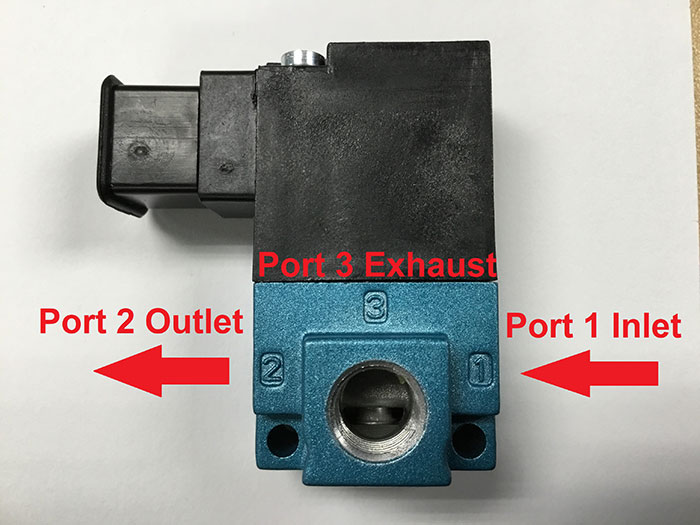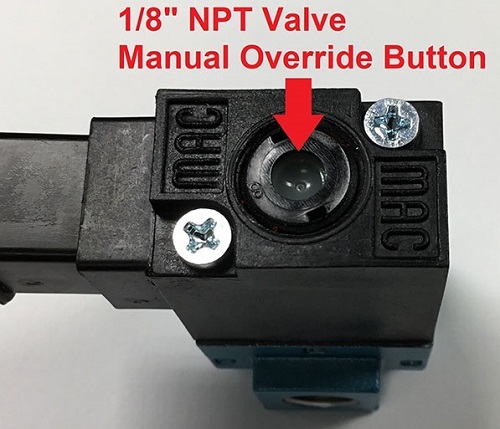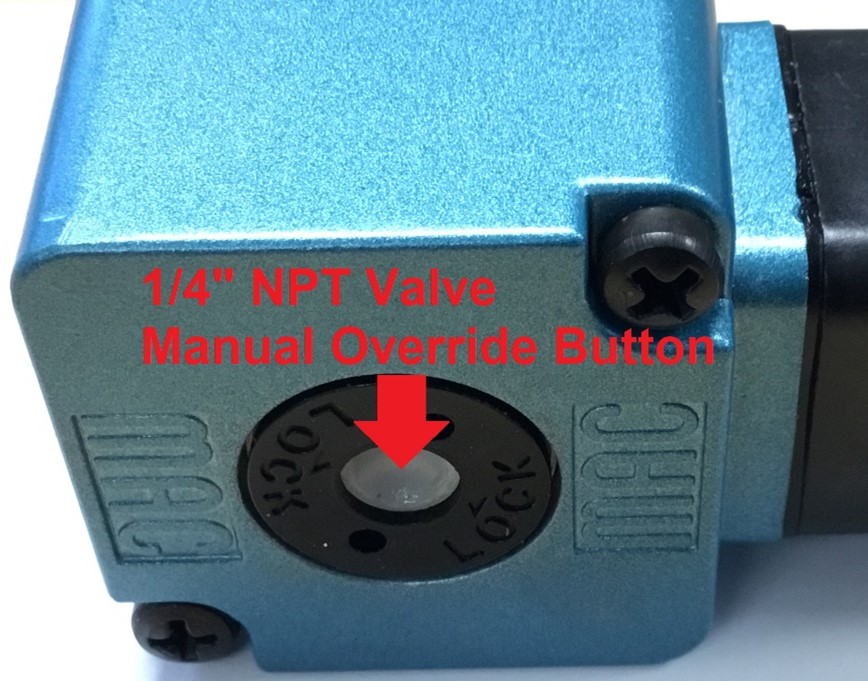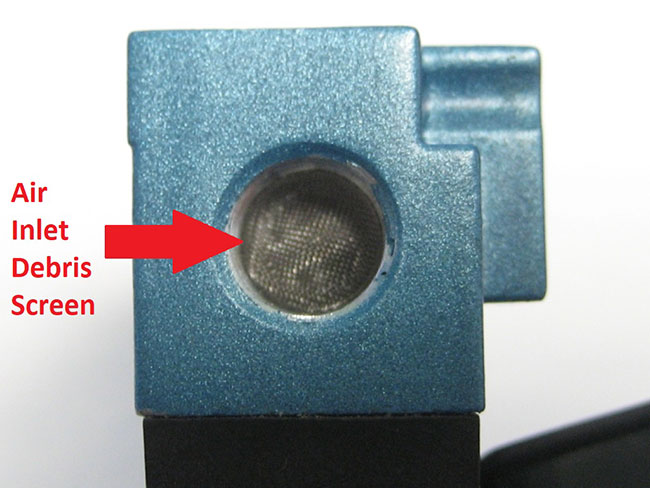Solenoid valve stuck open or closed.
The standard 12VDC, 24VDC, 24VAC, 110VAC, and 220VAC solenoid valves in 1/8” NPT and 1/4” NPT sizes are quite robust and generally operate for many years without issue. If air flow is constantly observed from the valve when no power is applied to the valve, or if no air flow is observed from the valve when power is applied, the first thing to check is that the connections on the valve are correct. There are three ports on the valve and they are labeled “1”, “2”, and “3”. Compressed air going into the valve should be connected to port 1. The outlet port on the valve is port 2. Port 3 is generally used as an exhaust port and normally will not have anything connected to it.

If the solenoid is operating correctly, compressed air connected to the inlet port (Port 1) will exit the outlet port (Port 2) when the solenoid is powered. If no air exits Port 2 when powered, there may be an internal issue with the valve. Also, no air should exit Port 2 or Port 3 when there is no power applied. If air does exit when there is no power applied, then there may be an internal issue with the valve. Inlet compressed air should never be connected to Port 2 or Port 3.
To test the valve, first remove the pressurized air from the valve. Apply appropriate power (12VDC, 24VDC, 24VAC, 110VAC, 220VAC, etc.) to the solenoid valve coil. There should be an audible click from the valve when power is applied and removed. If no audible click is heard, then there is likely an issue with the solenoid valve coil and the valve will need to be replaced.
If an audible click can be heard when power is cycled, then it is likely that the electrical portion of the valve is okay. Most of the solenoid valves have a manual override on them so they can be actuated in the absence of power.


Reapply air pressure to the valve inlet and press the manual override button on the valve several times to see if a change in operation occurs.
If there is no change in the valve operation, then it is possible that debris has entered the valve and caused it to stick open or closed. Each valve should have a fine mesh screen on the inlet port (Port 1).

Remove the inlet fitting from the valve (Port 1) and inspect for presence of the screen and/or debris. If the screen is missing and/or there is visible debris inside the valve, that is the likely cause of the valve sticking open/closed. It may be possible to blow the valve inlet port out with compressed air while cycling the valve electrically to remove any debris. If the debris is not able to be removed by blowing it out while cycling the valve, then the valve will need to be replaced.
If there is any oil in the compressed air system, it can get into the valve and cause the internal seals to swell and not seal properly, or cause the internal mechanism to stick closed. It is recommended that these valves be used with clean, dry air. If contamination does exist in the compressed air system, then it is recommended that an air/oil separator be run before the system air filter to prevent oil from entering the valve inlet. If it is determined that oil contamination has caused the valve to stick open/closed, then the valve will need to be replaced.